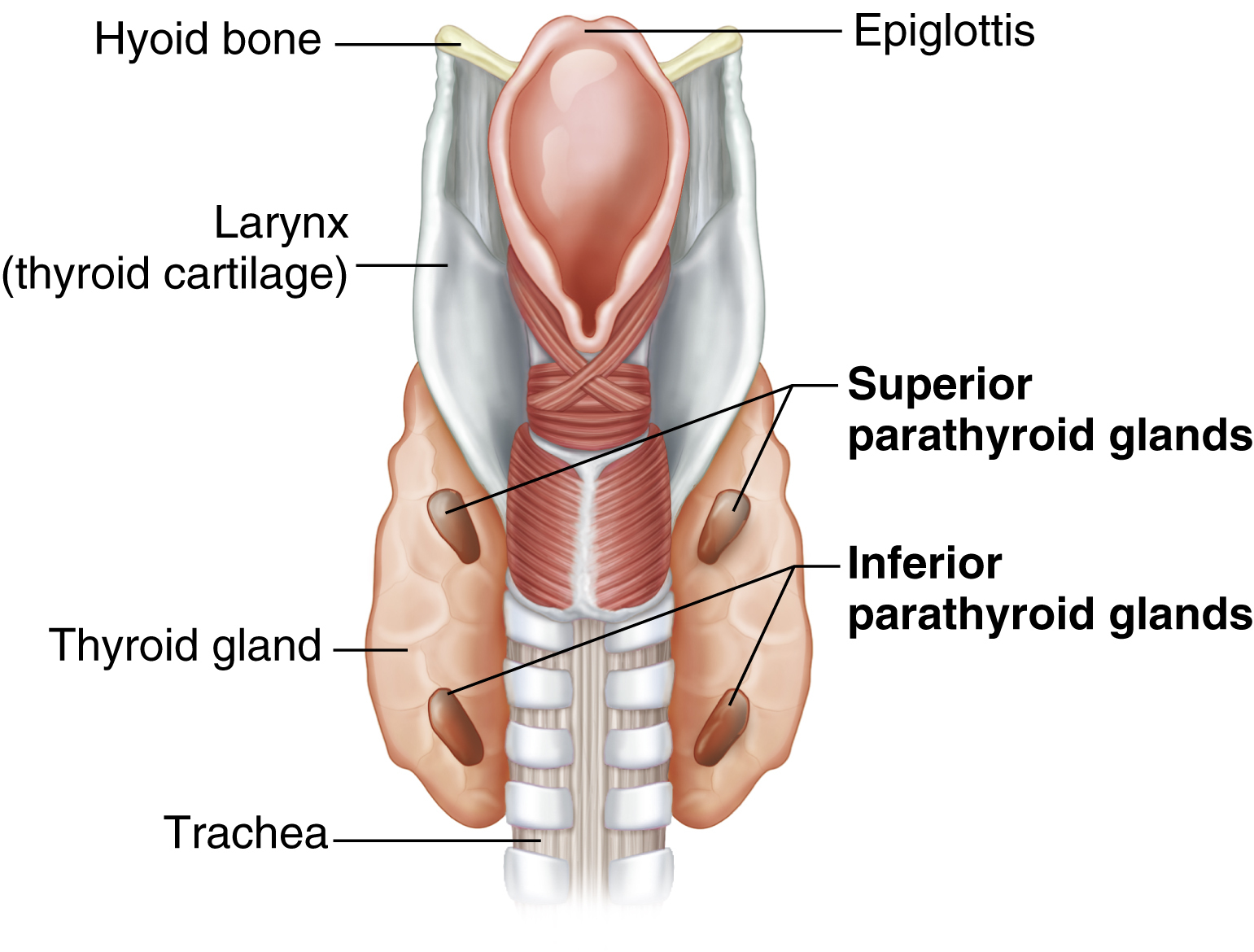parathyroid gland /-thī′roid/ [Gk, para + thyreos, shield, eidos, form; L, glans, acorn] , any one of several small structures, usually four, attached to the dorsal surfaces of the lateral lobes of the thyroid gland. The parathyroid glands secrete parathyroid hormone, which helps maintain the blood calcium concentration and ensures normal neuromuscular irritability, blood clotting, and cell membrane permeability. Each parathyroid gland is an oval brownish red disk measuring about 6 by 4 mm. The parathyroids are divided, according to their location, into the superior parathyroids and the inferior parathyroids. The superior parathyroids, usually two, are commonly situated, one on each side, on the caudal border of the cricoid cartilage beside the junction of the pharynx and the esophagus. The inferior parathyroids, also usually two, may be situated on the caudal edge of the lateral lobes of the thyroid gland or adjacent to one of the inferior thyroid veins. These glands are composed of intercommunicating columns of cells bound by connective tissue with a rich supply of capillaries. Parathyroid hypofunction usually causes tetany, which can be treated by the administration of calcium salts or parathyroid extracts.

